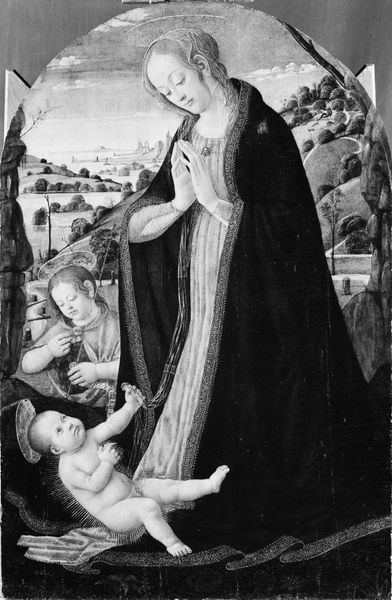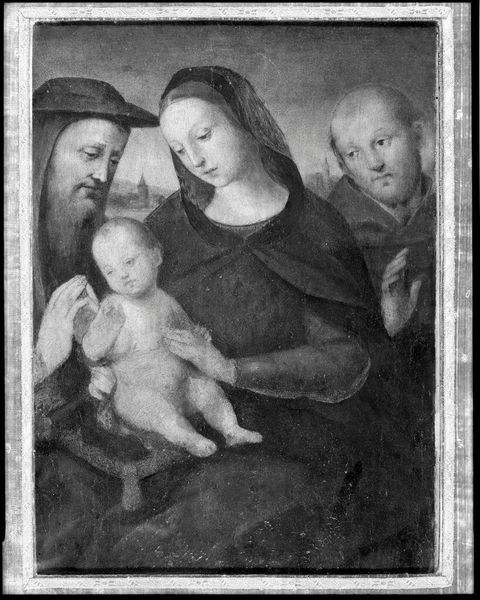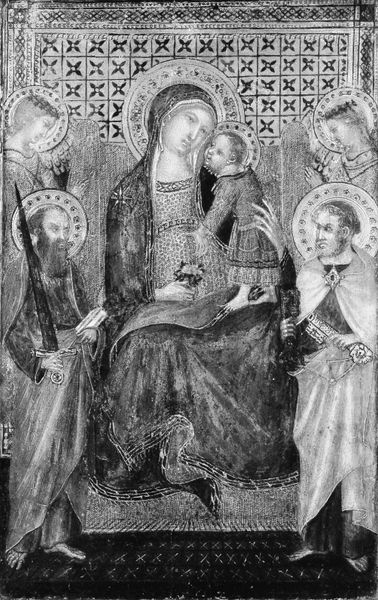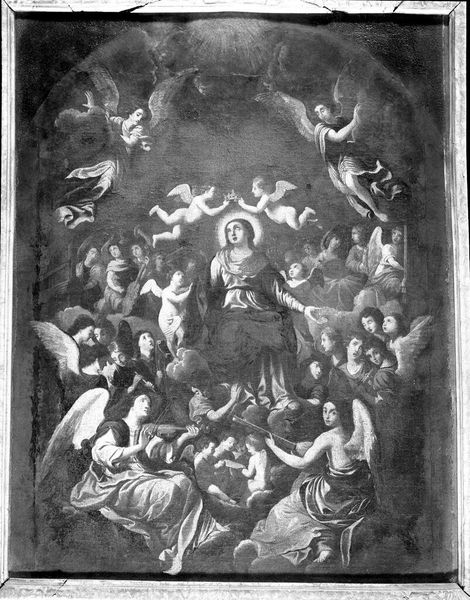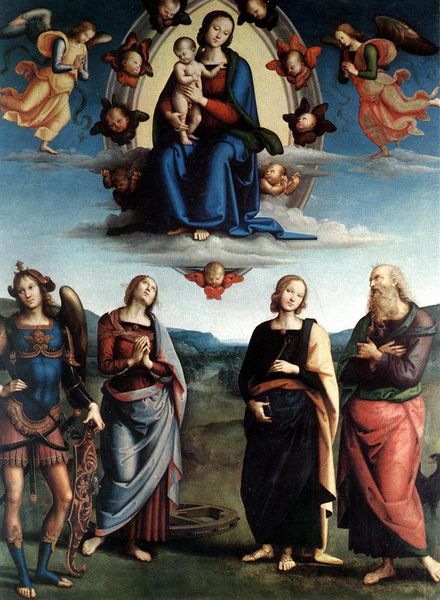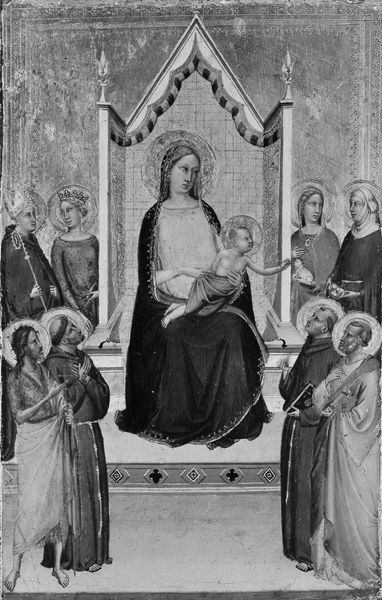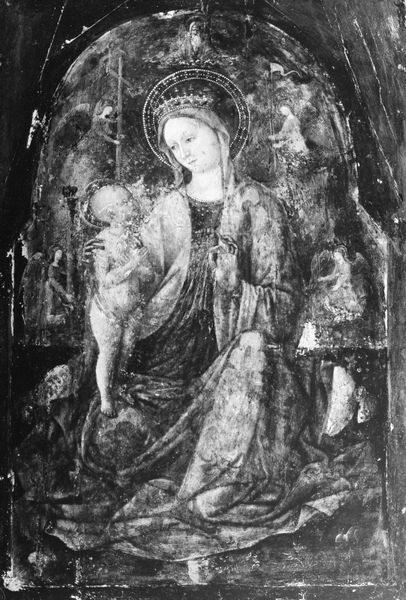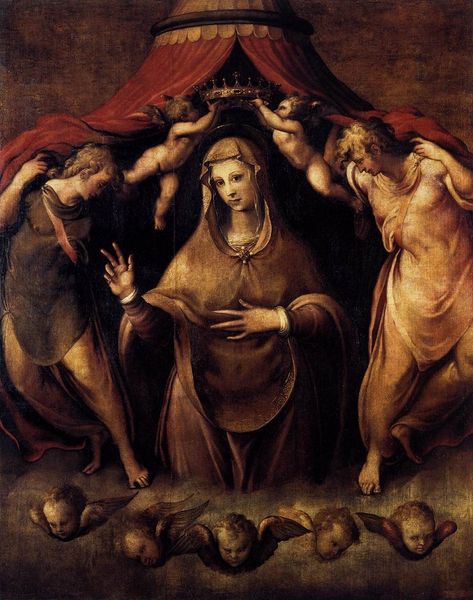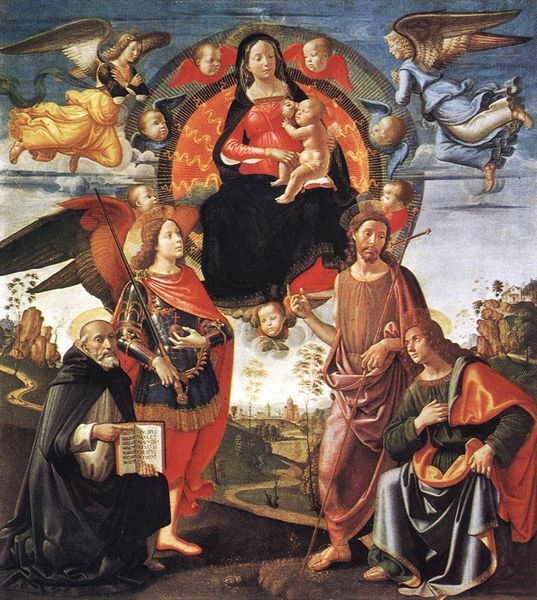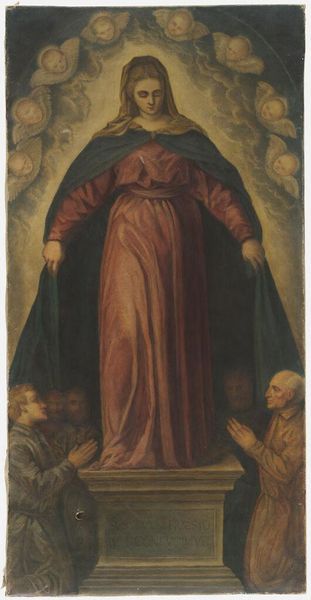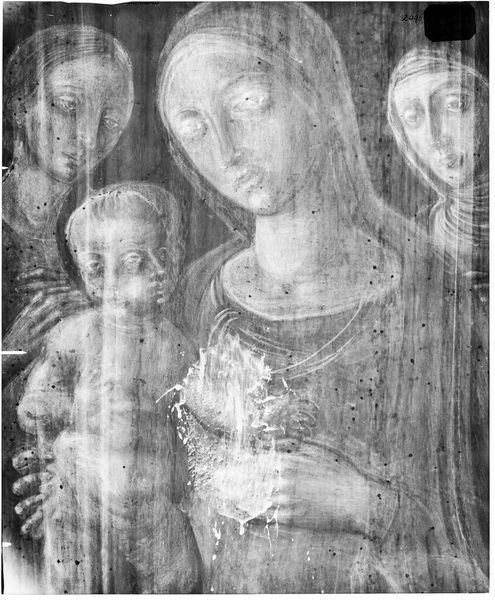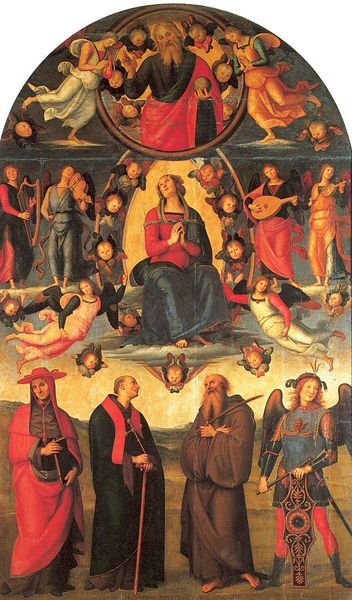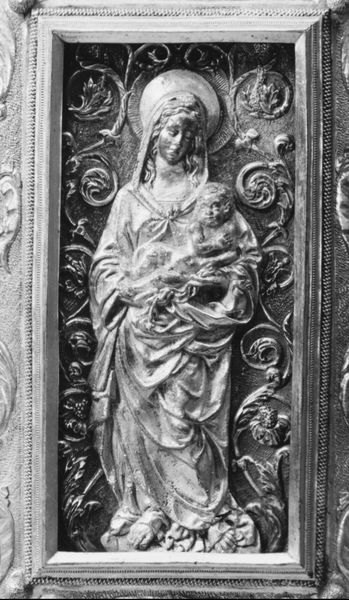
tempera, painting
#
portrait
#
high-renaissance
#
tempera
#
painting
#
figuration
#
christianity
#
history-painting
#
academic-art
#
italian-renaissance
#
virgin-mary
#
christ
Copyright: Public domain
Editor: This is Pietro Perugino’s "Madonna of Mercy with the saints and Stephen Jerome," a tempera painting from 1512. The large robe or mantle seems to dominate the entire composition; what exactly do you see happening here? Curator: It is compelling to view this Madonna of Mercy through a materialist lens, focusing on the labor and social context embedded in its creation and consumption. Consider the pigment itself. The deep blues would have been derived from lapis lazuli, a costly material, reflecting considerable economic resources. Editor: So, the color alone tells a story of wealth and status. Curator: Precisely! Think about the carpenters who prepared the wooden panel, the apprentices grinding pigments, and the complex commission that enabled Perugino to create this work. Patronage played an integral part in not only HOW the work was conceived, but even whether it would come into existence. It becomes less about purely devotional and spiritual meaning and more about social power structures that facilitated the very act of creation. It suggests how access to such artistry was limited and controlled. Doesn’t the almost formulaic arrangement diminish a purely devotional interpretation? Editor: It does! Considering the cost of materials and the labor involved reframes my understanding entirely. I guess it pushes the discussion from an artistic spiritual vision to more tangible, worldly implications. Curator: Exactly. By examining the material reality of its production, we can explore the dynamics of labor, patronage, and social stratification during the Italian Renaissance. Editor: Thanks, that opens up new perspectives for me; understanding the socioeconomic context makes the artwork much richer.
Comments
No comments
Be the first to comment and join the conversation on the ultimate creative platform.
